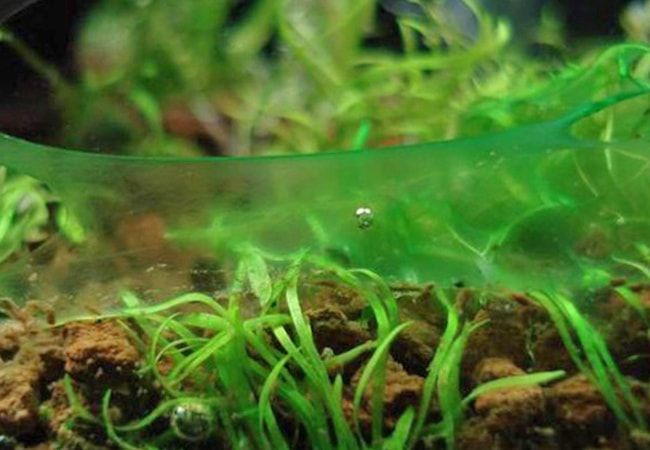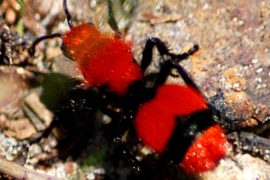Floating algae can be recognized by the typical green coloring of the water in the aquarium. It is also called an algal bloom. Read here how this type of algae develops, where the cause of algae growth lies and what you need to know to combat floating algae.
Green water in the aquarium: What are floating layers?
The algae bloom in the aquarium is unmistakably recognizable by the green water in the aquarium. Sometimes a whitish cloudiness appears first. Floating algae are tiny, microscopically small algae that can completely obstruct the view in the aquarium after a short time. They float freely in the aquarium water and do not settle on aquarium plants, panes or the hardscape. In natural waters, floating algae form the phytoplanton, which is a food source for all filtering animals (e.g. mussels or certain shrimp).
Floating Algae: Causes for the occurrence of an algal bloom in the aquarium
Sudden fluctuations
Floating algae usually appear when there are strong, sudden changes in the conditions in the aquarium. This can be the case, above all, if the temperature rises significantly or there is intense solar radiation. This situation can arise when the aquarium is in the sun due to the change of seasons. If you set up your pool in autumn or winter, you may find that the sun is different in summer and reaches the pool. If this is the case, there is a need for action: An aquarium should never be exposed to direct sunlight – because this also promotes the growth of other types of algae such as filamentous algae, red algae or blue-green algae.
Imbalance in the nutrient situation
If regular water changes are neglected, certain nutrients can accumulate in the water while others are no longer available in sufficient quantities. Good care of the aquarium with a partial water change every one to two weeks (depending on the size of the aquarium) and proper fertilization of the aquarium plants helps to prevent floating algae. As with all types of algae in the aquarium, prevention is better than cure. A checklist for plant care in the aquarium can be found here in our blog — as well as tips for changing the water in the aquarium.
Algae bloom during the start-up phase of the aquarium
Algal blooms can also occur when the aquarium is in the running-in phase, if an ecological balance has not yet been established after setup. During this time, in addition to the development of harmless brown algae, an infestation with floating algae or an algal bloom can also occur. We advise you to select some fast-growing aquarium plants when setting up a new aquarium, so that algae don’t stand a chance from the start.
Fast-growing aquarium plant – Brazilian Pennywort
A very undemanding and fast-growing stem plant is the Brazilian pennywort Hydrocotyle leucocephala. It grows very quickly in the aquarium and is highly recommended for beginners. As soon as the shoots have reached the water surface, they continue to grow in a flooding manner.
Fighting floating algae: Measures against algal blooms
Use UVC clarifiers to combat floating algae
How can the algal bloom in the aquarium be combated? A UVC clarifier can help. The water is passed through the UVC sterilizer and kills the algae and their spores. The device is also helpful for other types of algae, such as brush algae. It ensures clear and germ-free water. The aquarium water is pumped through a bell containing a UVC lamp. This light kills the spores of floating algae and other types of algae.
Water fleas against algal blooms
Unfortunately, normal algae eaters in the aquarium fail with floating algae – the particles are too small to be eaten. However, water fleas are a good biological method of combating floating algae. As natural “enemies” they consume the tiny algae particles and thus ensure algae-free water. However, they are quickly eaten by fish kept in the aquarium.
Dark treatment against floating algae
A dark cure can also work against floating algae. Plants are better able to cope with the deprivation of light than algae, which is why this method is often used successfully when there is an algal bloom. Follow these steps:
Cover the aquarium so that no more light enters. Provide extra ventilation during this time and feed as sparingly as possible. Turn off the CO2 supply.
First carry out a water change to remove as many floating algae as possible from the aquarium.
The dark cure against floating algae can last up to two weeks. During this time you should observe the aquarium every few days to make sure that the inhabitants and plants in the aquarium are doing well and that the algae are reducing.
After the dark cure, a generous water change is carried out.
Basically, you should ensure that the causes of algae growth are eliminated. Because the measure only removes existing algae – and does not solve the original problem. You can also find more tips on how to combat algae in the aquarium here in the blog.
What are your experiences with floating algae or an algal bloom in the aquarium? Have you ever had green water in your aquarium? We look forward to your tips and comments!





